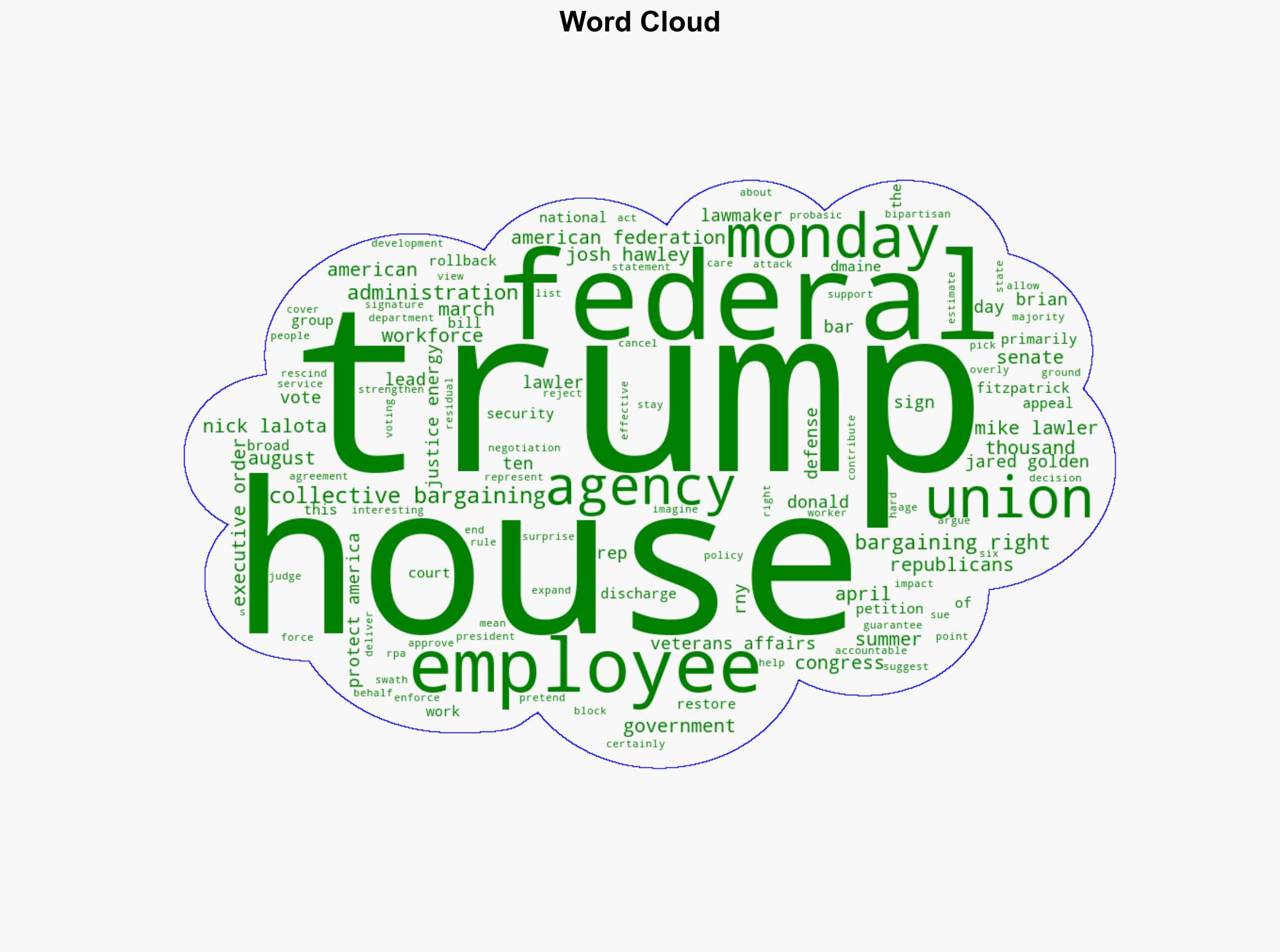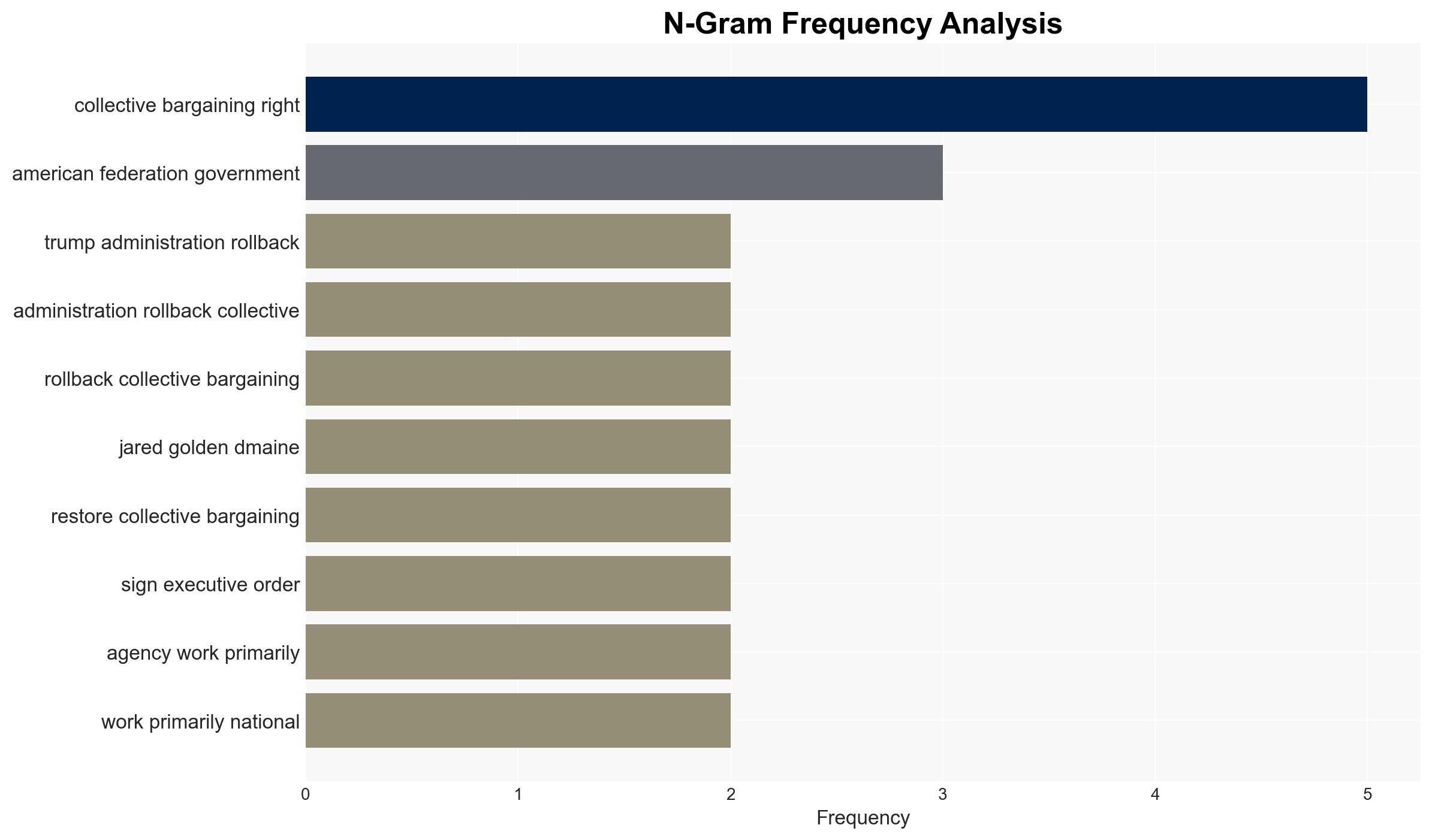Voting to Reject Trumps Attacks on Federal Unions – Lawyersgunsmoneyblog.com
Published on: 2025-11-19
AI-powered OSINT brief from verified open sources. Automated NLP signal extraction with human verification. See our Methodology and Why WorldWideWatchers.
Intelligence Report:
1. BLUF (Bottom Line Up Front)
The strategic judgment is that the bipartisan effort to restore collective bargaining rights for federal employees represents a significant pushback against the previous administration’s policies. The most supported hypothesis is that this legislative move is primarily driven by a genuine bipartisan interest in strengthening federal workforce rights, with a moderate confidence level. Recommended action includes monitoring further legislative developments and preparing for potential shifts in federal workforce dynamics.
2. Competing Hypotheses
Hypothesis 1: The bipartisan bill to restore collective bargaining rights is primarily motivated by a genuine interest in protecting federal employee rights and ensuring effective government operations.
Hypothesis 2: The bill is a political maneuver aimed at undermining the previous administration’s policies and gaining favor with federal employee unions for future electoral support.
Hypothesis 1 is more likely given the broad bipartisan support and the involvement of lawmakers from both parties who have historically supported labor rights. However, Hypothesis 2 cannot be entirely dismissed due to the political context and potential electoral motivations.
3. Key Assumptions and Red Flags
Assumptions include the belief that bipartisan support is indicative of genuine policy interest rather than political strategy. A red flag is the potential for partisan exploitation of the bill to gain political leverage. Deception indicators include any sudden shifts in party support or rhetoric that may suggest ulterior motives.
4. Implications and Strategic Risks
If successful, the bill could strengthen federal workforce morale and operational efficiency. However, failure to pass could exacerbate tensions between federal employees and the government, potentially leading to workforce disruptions. Politically, it could deepen partisan divides if perceived as a partisan attack on the previous administration’s policies.
5. Recommendations and Outlook
- Monitor legislative progress and stakeholder reactions to anticipate shifts in federal workforce policies.
- Engage with bipartisan lawmakers to understand their motivations and potential future legislative agendas.
- Best-case scenario: The bill passes, leading to improved federal workforce conditions and bipartisan cooperation.
- Worst-case scenario: The bill fails, resulting in increased workforce dissatisfaction and political polarization.
- Most-likely scenario: The bill faces challenges but eventually passes with some amendments, reflecting a compromise between parties.
6. Key Individuals and Entities
Brian Fitzpatrick, Jared Golden, Mike Lawler, Nick Lalota, Donald Trump, American Federation of Government Employees.
7. Thematic Tags
Structured Analytic Techniques Applied
- Cognitive Bias Stress Test: Expose and correct potential biases in assessments through red-teaming and structured challenge.
- Bayesian Scenario Modeling: Use probabilistic forecasting for conflict trajectories or escalation likelihood.
- Network Influence Mapping: Map relationships between state and non-state actors for impact estimation.
Explore more:
National Security Threats Briefs ·
Daily Summary ·
Support us





